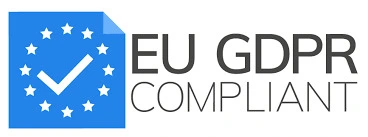Today, digital advertising includes numerous tools advertisers can use to promote their brand or their products. It provides advertisers with undeniable advantages that allow them to better reach their target audience and, therefore, reduce the cost of customer acquisition and loyalty. Marketing campaign measurement tools are one of these advantages, and they serve as a cornerstone in helping companies optimize their communication strategies. These measurement tools are an essential part of digital advertising campaigns and help distinguish this communication channel from more traditional ones, such as radio, billboard, or television advertising.
Retailers who earn a major portion of their revenue through physical stores now have access to tools that allow them to increase traffic at their points of sale. Drive-to-store advertising is an essential channel for generating in-store traffic that complements the media plans retailers already have in place. Because the tool is based on the physical behavior of the profiles targeted by each campaign, it’s important that drive-to-store campaign analytics take offline behavioral data into consideration.
This is where the concept of incrementality comes into play. Incrementality complements other performance indicators by analyzing offline data to determine how advertising messages impact a company’s target audience.
Why use incrementality in your drive-to-store campaigns?
Drive-to-store advertising includes first identifying a qualified audience for companies with several physical points of sale. The next step includes distributing an engaging message inviting each exposed profile to visit the company’s stores (using a CTA, integrated map, etc.).
Incrementality allows retailers using drive-to-store campaigns to study the tool’s effectiveness on the target audience. The way it works is simple. It determines the impact messages have on a group of individuals who have been exposed to them versus a control group that has not. Incrementality provides a concrete answer to the question of whether your campaign actually generated in-store traffic or not.
Many factors can affect in-store traffic, including the weather, vacation departures, and competitor promotions. Therefore, measuring organic visits is not always straightforward and can be biased. Using incrementality and its efficient methodology as a KPI will help retailers mitigate external factors and avoid making blind decisions about their drive-to-store campaigns.
How incrementality works for drive-to-store campaigns
Incrementality starts as soon as a target audience has been defined. Retailers need to be able to compare a message’s effectiveness on two groups with similar criteria. That’s why it’s important to identify a target group that will be exposed to the message, and a “control group.” Unlike the target group, this “control group” will not be exposed to the advertising message.
To receive transparent results for in-store visits, a third-party measurement vendor can analyze the mobility of these two groups. This makes it possible to see the number of individuals from the exposed target audience who visited a store after seeing the message and compare it with the number of individuals from the “control group” who visited a store without having seen the message. The number of incremental visits generated by the drive-to-store campaign can then be calculated as the difference in visit rates between the two groups.
![]()
Better visibility for reaching your objectives
Calculating incrementality gives retailers a more accurate view of how their drive-to-store campaigns affect in-store visits. They can now use this measurement tool to guide their customer acquisition efforts by investing more of their budget in activities that give them the best return on their investment and by using these key performance indicators:
- Cost per incremental visit (CPIV): Provides retailers with the real cost per additional visit
- Incremental revenue generated by the campaign: Provides retailers with the revenue generated thanks to additional visits (e.g., incremental visits * conversion rate * average cart value).
Using these types of KPIs allows advertisers to take a data-driven marketing approach and make the right decisions about their campaigns by identifying which products, messages, and content perform best.





